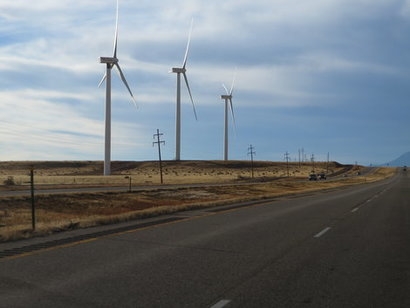
Commercial and industrial companies bought 4,447 megawatts (MW) of US wind capacity last year, setting a new record for annual procurements and bringing total corporate agreements for wind power to 16,857 MW, according to the first Wind Powers American Business report from the American Wind Energy Association (AWEA). The report reveals corporate customers across a variety of industry sectors now purchase 10 percent of all operating wind capacity in the country. The US wind market is increasingly attractive as businesses strive to meet sustainability targets and improve their bottom lines, with total contracts rising from fewer than 800 MW at the end of 2013 to over 16,800 MW at the end of 2019.
“Leading businesses are increasingly relying on wind energy to power their operations, reduce costs to their customers, and help achieve their sustainability goals” said Tom Kiernan, CEO of AWEA. “These companies are leaders in their industries, making sustainability commitments that are good for business and good for the environment. The US wind industry is proud to not only power millions of American homes, but to also provide affordable, reliable, and zero-carbon electricity to the brands that are driving this country’s economy forward, even as the US continues to recover from the global pandemic.”
More than 140 companies have purchased US wind energy. Overall, Google is the top corporate wind energy customer in the US, with 2,397 MW contracted. Facebook is the second largest purchaser, with 1,459 MW, followed by Walmart, AT&T, and Microsoft.
Walmart purchased the most wind energy of any company in 2019, signing contracts for three wind projects totaling 541 MW. AT&T was the second largest corporate buyer of wind for the year, contracting 460 MW from two projects. Facebook followed closely with 440 MW.
The breadth of the corporate and industrial market is growing alongside the depth, with 18 first-time buyers of wind entering the market last year. McDonald’s, Sprint, Ford Motor Company, Crown Holdings, and Gap were the leading first-time buyers of wind in 2019. McDonald’s, the first quick service restaurant company to buy wind energy, purchased 220 MW, the equivalent of over 1,300 restaurants-worth of electricity. That new commitment to wind jumped McDonald’s to sixth in wind purchases for the year and into the top 20 for overall contracted capacity.
The types of companies buying wind are diversifying. Prior to 2015, technology and retail companies accounted for nearly 80 percent of corporate wind energy purchases. Today, the two industries account for 53 percent, as other industries have discovered the value of powering their business with wind energy. In particular, wind energy purchases in the retail, food and beverage, and telecommunications sectors increased significantly in the past few years. At the end of 2019, the technology sector accounted for 41 percent of total corporate wind energy purchases, while retail companies represented 12 percent and telecommunications and food & beverage each represented 9 percent. The range of wind purchasers also encompasses the healthcare, automotive, industrial, oil and gas, consumer goods, financial, and entertainment sectors.
The past six years have seen extraordinary growth for corporate wind purchases, with total contracts rising from fewer than 800 MW at the end of 2013 to over 16,800 MW at the end of 2019. Economics have been at the heart of this growth. Wind is now the lowest-cost source of electricity generation in many parts of the country, thanks to costs declining more than 70 percent since 2009. Corporations across the country are investing in wind not only to lower emissions, but also to secure fixed-price, low-cost, and reliable electricity protected from fuel price fluctuations.
Another key reason for corporate interest in wind energy is that American consumers care what powers the businesses they give their brand loyalty to. Over 80 percent of the nation’s voters say a company’s commitment to combating climate change is important when they consider where to shop and which brands to purchase, according to a national survey conducted by Public Opinion Strategies earlier this year. Similarly, 88 percent of voters, including 83 percent of Republicans, say it is important for the companies they patronize to use renewable energy as one way to help keep costs low and pass on those savings to consumers. And 87 percent of voters say it is important that the brands they buy goods and services from are responsible stewards of the environment. Overall, 88 percent of voters want to shop, dine, and purchase from brands that they believe are good corporate citizens.
The corporate momentum towards wind is set to continue building across the next decade. While corporate wind purchases have grown significantly in recent years, it is still a relatively new market and represents a large opportunity for future growth. Today, Fortune 1000 companies only source 5 percent of their electricity needs from renewables, leaving tremendous opportunity available for future procurement. Analysis from Wood Mackenzie estimates these Fortune 1000 companies will procure 85,000 MW of additional renewable power through 2030. Wind power, America’s largest source of renewable energy, will be a key pillar of that progress. The barriers to corporate wind purchases continue to fall. Additional financial instruments for companies to purchase wind are coming to market, while falling costs provide an excellent long-term power price hedge. Consumers and investors are increasingly demanding sustainable products, delivered using clean energy. The US wind industry remains poised to meet continued strong demand for low-cost, reliable, and clean energy from leading corporate partners in the years to come.
For additional information:

